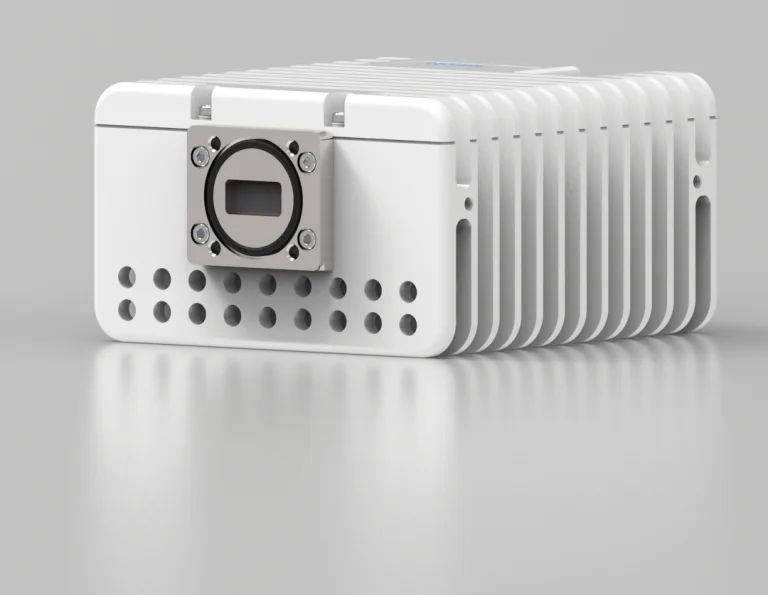Hey there, fellow tech enthusiast! Ever wondered how your phone magically connects to the internet while you’re cruising at 35,000 feet? Or how remote research stations in Antarctica stay connected to the world? The answer might surprise you – it’s all thanks to these amazing little devices called block upconverters.
I’ve been working with these fascinating gadgets for years, and I’m excited to share what makes them so special. Think of me as your friendly neighborhood RF engineer, here to break down everything you need to know about these signal-boosting superheroes.
Understanding Block Upconverters: The Heart of Satellite Communication
So, what is the function of upconverter? Great question! Imagine you’re trying to shout a message across a crowded stadium. Your voice might not carry far enough, right? That’s exactly the challenge we face with satellite communications.
A block upconverter is like giving your signal a powerful megaphone. It takes your low-frequency signal (usually around 950-1750 MHz in the L-band) and transforms it into a much higher frequency signal that can easily travel the vast distance to satellites orbiting our planet.
The process is beautifully elegant: your upconverter mixes your input signal with a stable reference frequency, creating new frequencies. It then carefully selects the higher frequency component – and voilà! Your signal is now ready for its journey to space.
What is the Use of BUC? Bringing the World Together
BUC (Block Up Converter) technology touches your life in ways you might never have imagined. Every time you:
- Video call your family from a remote location
- Stream your favorite show on a flight
- Read breaking news from around the globe
- Use GPS navigation in your car
You’re benefiting from the hard work of block upconverters! These devices are the unsung heroes making our connected world possible.
Real Stories from Real Applications
I’ll never forget helping a disaster relief organization set up communications after a major earthquake. Within hours of deploying a block up converter ku band system, rescue teams could coordinate efforts and families could reach their loved ones. It’s moments like these that remind me why this technology matters so much.
Exploring Frequency Bands: Your Guide to the Spectrum Highway
What is the Ku-band Frequency?
Ku-band operates in the 12-18 GHz range, and it’s honestly one of my favorite frequency bands to work with. The uplink typically uses 14.0-14.5 GHz, while downlink operates around 12.0-12.75 GHz. Think of Ku-band as the reliable workhorse of satellite communications – it performs well in most weather conditions and offers a great balance of coverage and data capacity.
What is the Ka-band Frequency?
Ka-band spans the impressive 26.5-40 GHz range, offering incredible data speeds that’ll make your head spin. While it’s more sensitive to heavy rain (we call this “rain fade”), the performance gains are often worth the trade-off, especially for high-bandwidth applications.
Block Up Converter Design: Where Engineering Meets Innovation
The beauty of modern block up converter design lies in its thoughtful engineering. Take the AKS-20W for example – it’s a perfect showcase of how far we’ve come. These units are designed with your success in mind, featuring:
Smart Power Management: Efficient amplification that doesn’t waste energy or generate excessive heat
Rock-Solid Stability: Precision frequency control that keeps your signals exactly where they should be
Clean Signal Processing: Amplification that preserves your signal quality without adding unwanted noise
Built to Last: Rugged construction that handles whatever Mother Nature throws at it
The Silent Revolution
Remember those old upconverters that sounded like jet engines? Those days are long gone! Modern fanless designs like the AKF-12W use clever thermal management to stay cool and quiet. No more worrying about fan failures in remote locations or noise complaints from neighbors!
Ka Band Upconverter: Opening New Possibilities
Ka band upconverters are where things get really exciting. These high-frequency champions enable:
- Crystal-clear 4K video streaming from anywhere on Earth
- Lightning-fast internet connections via high-throughput satellites
- Advanced broadband services for underserved communities
- Secure, high-capacity communications for critical applications
I recently worked with a research team studying climate change in Greenland. Their ka band upconverter system allowed them to transmit massive amounts of data back to universities around the world in real-time. It’s incredible how this technology enables groundbreaking research in the most remote corners of our planet.
Choosing Your Perfect Match: A Gentle Guide
Selecting the right buc block up converter doesn’t have to be overwhelming. Let me walk you through the key considerations:
Power Requirements: Think about your coverage needs. More power means greater range, but also higher costs and power consumption.
Frequency Band Selection: Ku-band for reliable, all-weather performance, or Ka-band for maximum speed when conditions are favorable.
Size and Installation: Consider where you’ll mount it and how easy it needs to be to maintain.
System Compatibility: Make sure it plays nicely with your existing equipment.
The AKLS-10W is often a sweet spot for many applications – it offers solid performance without overwhelming complexity or cost.
Installation Tips from a Friend
After years of installations, I’ve learned that success often comes down to the little details. Here are some friendly tips:
Location matters: Choose a spot with a clear view of the sky and protection from the elements when possible.
Think ahead: Plan for future maintenance access. Your future self will thank you!
Test thoroughly: Always verify your installation with proper equipment before calling it complete.
Document everything: Keep good records of your configuration settings and installation details.
Looking Toward Tomorrow
The future of satellite communications is brighter than ever! With new satellite constellations launching regularly and 5G networks expanding globally, block upconverters are playing an increasingly important role in keeping our world connected.
We’re seeing exciting developments like software-defined upconverters that can adapt to changing conditions automatically. Imagine systems that optimize themselves based on weather patterns or traffic loads – that future is closer than you might think!
Your Journey Starts Here
Block upconverters might seem like specialized equipment, but they’re actually the invisible backbone of so many services we rely on daily. Whether you’re planning your first satellite installation or simply curious about the technology that keeps us all connected, understanding these remarkable devices opens up a whole new world of possibilities.
I hope this guide has helped demystify the world of upconverters for you. Remember, every expert was once a beginner, and there’s always more to learn and discover in this fascinating field.
Have questions about block upconverters or want to share your own experiences? I’d love to hear from you! Drop a comment below and let’s continue this conversation.


